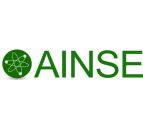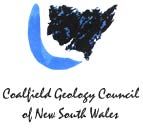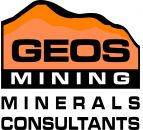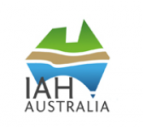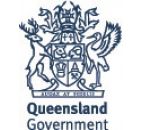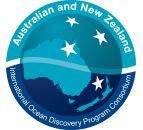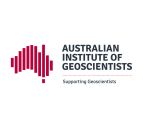GSA AESC
Session Details: Dynamic Planet
Today’s Earth is the sum of 4.5 billion years of geological processes. The Dynamic planet theme will address:
- The geodynamic evolution of Australia and other continents from the Hadean to the present;
- The evolution of the Earth-Moon system and the meteoritic impact record;
- The expression of the circulation driven by the Earth’s heat engine in lithospheric plate tectonics, mantle dynamics and differentiation, and core evolution;
- The processes that govern deposition and deformation in intracratonic settings;
- Processes of crustal growth and recycling, at convergent margins and in other settings;
- Geophysical and geochemical evidence of the structure and composition of the deep subsurface; and
- The influence of all of these elements on the formation and distribution of mineral and energy resources.
Authors intending to submit an abstract to the Dynamic Planet theme should alternatively consider the symposium on “Comparisons & Contrasts in Circum-Pacific Orogens”, if their contribution is relevant to the Palaeozoic to recent tectonic evolution of either the western or eastern Pacific/paleo-Pacific. Abstracts submitted to the Symposium will not count towards the oral and/or poster limits applying to the thematic sessions.
DP01 Tectonics of the Tasmanides - a whole of orogenic system approach (DP01: Tectonics of the Tasmanides)
Proponent:Chris Fergusson cferguss@uow.edu.au
The tectonics of the eastern Australian Tasmanides has been a controversial issue over many years particularly in regard to Early to Late Paleozoic tectonic setting and relationships to the global context as a Pacific margin orogenic belt along the active margin of east Gondwana. Large amounts of new information are being released (e.g. the recent workshop held in Brisbane in June 2013 on the Thomson Orogen). New ideas on the development of oroclines and large-scale strike-slip displacements have been presented recently for parts of the Tasmanides and are a continuing source of debate and even friction between researchers. The aim of this session is to encourage presentation of a range of syntheses that attempt to reconcile data and tectonic interpretations over large parts of the Tasmanides. Undoubtedly this would provide a source of lively debate and hopefully some advance can be made on the controversial issues.
DP02 Oroclines in the Tasmanides
Proponent: Bob Musgrave robert.musgrave@industry.nsw.gov.au
When Carey, in 1955, introduced the term “orocline” to describe orogenic belts with significant curvature in plan, he drew his examples from the great mountain belts of Eurasia and North America, finding no examples in the Tasmanides. Since then, regional-scale geophysics and geological mapping have revealed a raft of curved structures in the Tasmanides, many under cover. Interest has recently been piqued by the proposition of oroclinal megafolding as an alternative to strike-slip displacement as a means to duplicate the terrains of the western Lachlan Orogen in the eastern Lachlan, and debate about oroclines in the New England Orogen continues. Consensus about the nature, and even the existence, of the various proposed oroclines in the Tasmanides is yet to be reached. This session invites both pro and con parties to produce and criticise evidence from the Tasmanides for both the curved geometry and the large-scale vertical-axis rotations that are the defining elements of oroclines, and to debate the mechanisms that may have led to their development.
DP03 Precambrian Geochronology
Proponents: Ian Tyler ian.TYLER@dmp.wa.gov.au
Michael Wingate Michael.WINGATE@dmp.wa.gov.au
The session is to commemorate Alec Trendall, a former Director of the Geological Survey of Western Australia, and a tireless advocate of the use of geochronology to understand the Precambrian geology of Western Australia. In the 1960’s he recognised that a numerical nomenclature for the Precambrian would enable Precambrian stratigraphy to ‘start anew’ rather than follow the Phanerozoic approach. Alec played a major role in setting up the joint GSWA/Curtin University geochronology program (Rb-Sr, Sm-Nd and ultimately SHRIMP at the John de Laeter Centre of Isotope Research), and later became an enthusiastic 'driver' of the SHRIMP at Curtin. He was also instrumental in having the first specialist geochronologist appointed at GSWA. Contributions would be invited on all aspects of the geochronology of Precambrian rocks, particularly the application of new and innovative approaches and techniques to understanding Precambrian geology in Australia and other continents.
DP04 Earthquakes and Volcanoes in the Not-So-Stable Plate
Proponent: Kevin McCue mccue.kevin@gmail.com
Here we are, continental Australia, in the middle of one of the Earth's larger tectonic plates which should be 'stable' but with Recent volcanoes in Queensland, Victoria and South Australia and potentially destructive earthquakes in all states and territories. We have to ask - why? This session should establish a framework leading to a conceptual mechanical model of the internal plate rupture mechanism, pinpoint the drivers and establish limits to the moment release and moment release rate within the continent.
Attendees should come prepared to discuss:
• stress release mechanisms such as recent, historical and paleo-earthquakes, their distribution and frequency
• the existence of a brittle/ductile transition zone in the mid crust of Australia
• tectonic events triggered by mining, hydro-fracking and reservoir filling
• the source region (depth) of magma released by Recent volcanoes and how they exist in a predominantly compressive stress regime
• the most likely site of the next volcano and large earthquake.
DP05 Fluids and Melts from Core to Crust
Proponents: Martin van Kranendonk m.vankranendonk@unsw.edu.au
Stephen Foley stephen.foley@mq.edu.au
This session traces the sources and geochemical effects of fluids across the pressure range of the internal Earth from core to crustal depths. The movement of melts, water and other fluids have been the main agency of transport that has fractionated the Earth’s geochemical components throughout geological time. Contributions to this session take an interdisciplinary look at the processes and conditions of melt and fluid production and movement, quantify the element budgets of these processes, and consider the changes in the compositions and effects of melt and fluid transport through time.
The session will address the following issues:
1.High-pressure fluids and redox processes, including synchrotron results and processes involving fluids and melts at pressures corresponding to the lower mantle and transition zone.
2.The composition and architecture of mantle lithosphere blocks from the first half of Earth history, and their modification by later processes.
3.The formation and preservation of continental crust as a function of time.
4.Multi-scale deformation processes in the lower crust and upper mantle.
5.Geochemical and petrological consequences of deep subduction.
6.Core to Ore: concentration processes of precious elements into ore deposits
7.Detection and description of rhythmic and episodic processes through Earth history
DP06 The Thomson Orogen in Queensland and Northwestern NSW
Proponent:Gary Burton gary.burton@trade.nsw.gov.au
The session is aimed at presenting the latest ideas on the tectonics of the Thomson Orogen in Queensland and northern New South Wales. What is known about its composition; ages of deposition (and provenance), metamorphism/deformation and igneous activity; geological history and tectonic models which have been proposed to explain these features.
DP07 Archean and Proterozoic Hot Orogens: Rocks, Models, Mechanisms, and Resources (DP07: Archean and Proterozoic hot orogens)
Proponents: Klaus Gessner klaus.gessner@dmp.wa.gov.au
Ivan Zibra Ivan.ZIBRA@dmp.wa.gov.au
Michael Doublier michael.doublier@ga.gov.au
In the past decade a large number of field, laboratory and numerical studies have supported the hypothesis that crustal deformation in hot lithosphere can be fundamentally different compared to cool lithospheric environments. This insight has challenged the application of more traditional concepts of extension, accretion and collision within Archean and Proterozoic lithospheric provinces that host mineral deposits and energy resources in Australia and elsewhere. We invite oral and poster presentations that contribute to the understanding of heat and mass transfer in hot orogens, in particular with regard to evolving structure, lithospheric strength, metamorphism, crustal melting, and fluid flow in Archean and Proterozoic crust.
DP08 Understanding the Composition and Evolution of the Earth: Australian Innovation in Geochronology, Thermochronology and Isotope Geochemistry (DP08: Composition and evolution of the Earth)
Proponents: Andy Gleadow gleadow@unimelb.edu.au
Brent McInnes directorjdlc@curtin.edu.au
Norm Pearson norman.pearson@mq.edu.au
Australian researchers have played a leading role in developing innovative approaches and new technologies for the study of the evolution of the continents from the Hadean to the Holocene, and from the core to the surface. The result is a spectrum of methods that can reconstruct the origin and evolution of the accessible crust and lithosphere in unprecedented detail, and a range of collaborative infrastructure platforms that are being used to tackle key geoscientific questions in Australia and elsewhere. This session is designed to explore current developments and innovative applications of geochronology, thermochronology and isotope geochemistry.
Joint sessions hosted by other themes:
Environment: EV05 Scientific Results of the Integrated Ocean Drilling Program (IODP) (EV05: Scientific results of IODP)
Living Earth: LE02 The Australian Neogene: prelude to the present
Latest News
Public Forum
Book
here
(click for more)
AESC 2014
December 2013
AESC 2014 First Circular
March 2013








